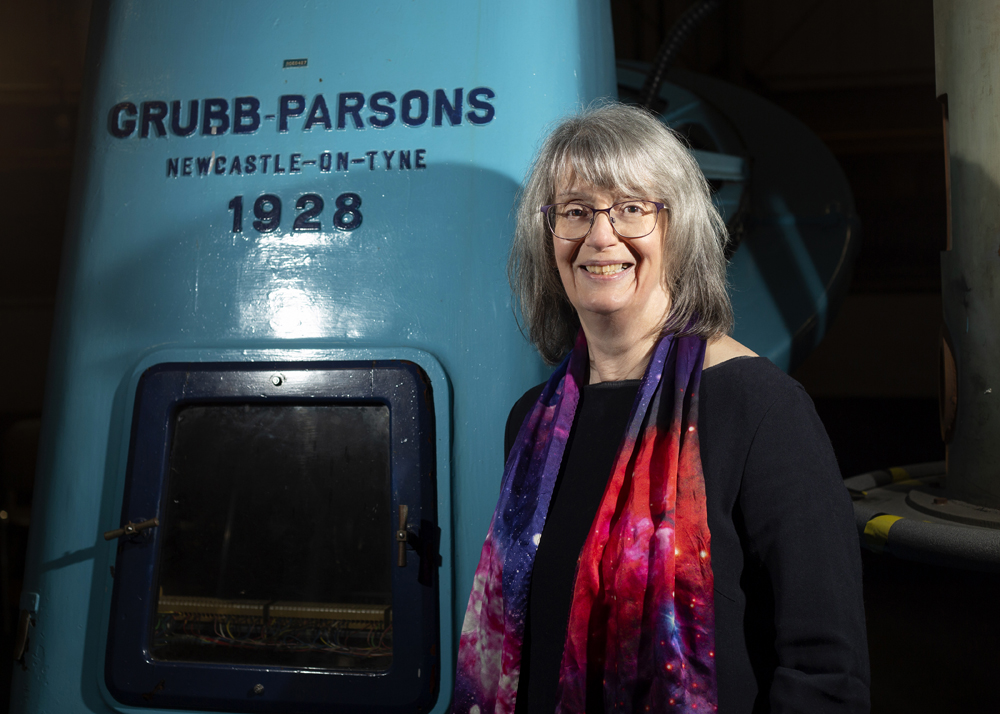 Lady computers at ROE
Lady computers at ROE For much of history, women entered astronomy through familial ties - often assisting husbands, brothers or uncles. Although this indirect path enabled significant contributions, recognition for them was rare.
Caroline Herschel, for example, discovered eight comets while working with her brother William Herschel and became one of the only three women to receive honorary membership from the Royal Astronomical Society (RAS).
Despite such achievements, the RAS remained resistant to female inclusion for much of its existence.
Women like Annie Mauder, who calculated astronomical ephemerides, and Elizabeth Brown, who documented sunspots and revealed the 11-year solar cycle, were denied full membership. In response, Brown founded the British Astronomical Association (BAA) at age 60, which welcomed women and became a key platform for their work for nearly 30 years.
 Mary Somerville
Mary Somerville Scotland produced notable women astronomers as well. Williamina Paton Fleming, once a maid, assisted Professor Edward Pickering and developed a stellar classification system, discovering the Horsehead Nebula. Mary Somerville, another Scottish pioneer, translated Laplace's
Mécanique Céleste - the first scientific text by a woman used in education - and gained recognition through her mathematical studies and correspondence with leading scientists.
However, many women lacked agency in their careers, often relegated to unpaid or uncredited roles. Women were also barred from higher education and civil service exams, limiting their access to paid scientific roles.
Over time, institutions began to offer more formal roles for women, though progress was slow and uneven.
This began to change in the 1890s with the introduction of “lady computers" at the Royal Greenwich Observatory. These women performed calculations based on observational data but were poorly paid and had no promotion prospects.
The scheme was revived in 1909 at the Royal Observatory Edinburgh (ROE) under the
Carte du Ciel project which aimed to catalogue the entire sky.
This marked the first time women were paid for astronomical work at the observatory.
Among the first hires were the Falconer sisters, Sarah and Isabella. Over the next few decades, 18 women were employed under this initiative, including Marie le Havel, who lived with one of the Falconer sisters in 1935.
In the 1940s, Mrs. Holroyd was the only woman on staff at the ROE, which had just eight employees at the time. Her role was general and supportive, based in what is now the ROE library. Mary Bruck, who had a PhD in Solar Astrophysics, joined the observatory in 1957 as a part-time lecturer, later becoming full-time. In retirement, she compiled extensive historical records, including a file on
Women in Astronomy, still held in the ROE archives.
The latter half of the 20th century brought more women into technical and research roles at the ROE, though many still worked in administrative or support positions. Lynn Ritchie who joined as an Administrative Assistant in 1993, worked at the observatory as the Executive Assistant to the Director of the UK ATC until 2024. Karen Moran, the Librarian at ROE, who overlooks the Crawford Collection, joined as a Library Assistant in 1999 (since semi-retired).
Notable exceptions to the predominantly administrative positions held by female staff included Helen McGregor (mechanical engineer), Maureen Elis (electronics engineer), Sandra Leggett (postdoctoral fellow), and Jocelyn Bell Burnell, who held various roles including running the Visitor Centre during the appearance of Halley's Comet.
 Professor Gillian Wright
Professor Gillian Wright In the 1980s and 1990s, bolstered by the observatory's increasing international collaborations on various telescope projects, more women began to join the ROE in both scientific and administrative capacities. Including
Gillian Wright who joined as a research fellow in 1986 and would go onto become Director of UK ATC and Head of Site at ROE (2012-2024).
Despite these advances, women working at the ROE and UK ATC in the late 20th century often faced significant challenges. Female staff were rare in technical departments, often just one or two per team.
Gender bias also affected research opportunities. One staff member noted that proposals with her name as the principal investigator were more likely to be rejected. While such concerns were often dismissed as coincidence, later data - such as the statistics on the Hubble telescope time proposals - suggest otherwise.
Although the number of women at ROE has increased, disparities remain. Women now account for just over 30% of the staff at UK ATC. Hence, while a lot of change has taken place over the years, there is still room for improvement.
